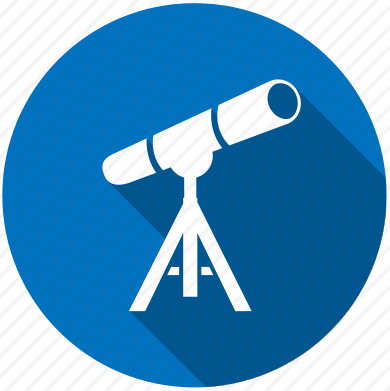In my experience, being a Member of the B.o.D. in many and diverse Companies around the World, in either an executive or non-executive role, you belong to one of three categories.
- Executives & Stakeholders
- Personalities
- Remainder
While the first category is overworked, the other two are underemployed. These two last categories can do stellar work, in the difficult transition times that most Companies are undergoing, if transformed from their sanctioning role into a more creative one. The way to do it is by disrupting the present operational inertia of the B.o.D.
 Operational Inertia does not mean that a B.o.D. is not functioning. It means that there is a settled way of doing things, which creates a climate that impedes a B.o.D. from reaching its full potential.
Operational Inertia does not mean that a B.o.D. is not functioning. It means that there is a settled way of doing things, which creates a climate that impedes a B.o.D. from reaching its full potential.
Compliance and other regulatory aspects, while useful and necessary, should not fully occupy the B.o.D deflecting it from fulfilling its primary purpose i.e. ensuring the present and future prosperity of a Company to the benefit of its Shareholders.
What we see in many B.o.D.s is that a smaller part of it makes most of the work and takes most of the decisions, while the rest operates in a sanctioning only mode.
A successful method of B.o.D improvement is the examination of the Board by a qualified external advisor, as well as, the use of one of the accepted procedures of B.o.D evaluation and improvement.
Below is a brief outline of the work which needs to be done, once the fields of activity and the performance of an Enterprise are studied and evaluated in a concise manner.
The first step is the examination of the analytic CVs of all the B.o.D. Members.
The second step to a B.o.D performance improvement is an examination of the minutes of meetings in the last two years.
This will highlight who are the active members and who are the inactive ones.
A long interview with the Chairman of the Board will considerably improve the understanding of the dynamics in a B.o.D, subsequent to which a more formal interview with the CEO should take place.

The above work, will shape the understanding of a specific B.o.D. helping to accurately segment its members into one of the above three mentioned categories. The main criterion here is not competence for the position per se, but rather participation and value inputs, to a collective B.o.D effort, in guiding an enterprise.
A structured interview, with a questionnaire of more than 200 questions, designed for each of the above three mentioned categories will follow.
At this point, the mechanistic part is over and the direct human to human work begins.
It is naive to believe that questionnaires and prepared interviews will improve the B.o.D. by themselves. These are the groundwork before the important work begins. This starts by discovering which members of the B.o.D. are unlikely to contribute to the collective value of the Board.
The first thing any Boardroom member deserves is respect.
It must be clearly understood that every member of a B.o.D. has a strong perception of self. This perception is independent of the actual position of the Member in the value hierarchy of a Company.
The interviewer must measure up to this perception.
This means that the person to person interviews cannot be conducted by just a bright and smiling pollster. A Boardroom Member can only be interviewed by a peer.
The specialized nature of a board review requires skills and competencies outside the customary scope of many general advisors. A specialist advisor, for the job, will have a broad range of exposure to different boardroom practices, performance benchmarks and will be in his/her own right respected by the business environment having originated from it.
This long, individual for each Member interview, where all the present and future challenges, of an Enterprise will be assessed, will highlight those Board Members that are of no importance to its business.
Those Members can be kept on a Board or let go, following Stakeholders decision, but successfully replacing them is a valuable opportunity for a significant Board improvement.
The expected outcome of this evaluation is twofold:
- Gap identification in competences that are needed in a Boardroom.
- Improvement of the collective competence of a Board.
In every Enterprise, the selection of the Members composing its Boardroom has been decided in the past on the basis of the Stakeholders’ past experiences.

The redesign of a Boardroom has rather to do with the future of an Enterprise.
Before looking for new Members, a search for hidden talent and potential inside the present Boardroom must be conducted.
In all Boardrooms a continuous personality contest takes place. Some members, for many reasons, may have an unfair advantage. The tendency to use this unfair advantage to direct Board decision making must be identified and checked.
Nudge the modest and introverted members, identify the power plays within the Boardroom and a new wind will start to blow.
Once the real limits of the present Boardroom are reached, the gaps in its composition as related to the mission of a Company, are easy to identify.
Most often the Boardroom is reactive to situations. For instance, reacting to an executive proposal, an audit, a specialist opinion, even a crisis.
The purpose of the Redesign of the Boardroom is to get it also to be proactive.
To transform a Boardroom to a proactive instrument, the results of all the questionnaires and interviews must be collectively evaluated by an experienced and independent external assessor.
Then comes the most challenging part.
The external Boardroom assessor/evaluator, accepted as a peer by the Board Members, will then state with authority and in an impactful manner, the knowledge gaps of the present Boardroom, relative to the needs and purposes of an Enterprise.
New Members must be chosen in replacement and/or addition of present Members with the purpose to disrupt.
Even a rebar industry needs modern marketeers and analytics. More Members must be able to see the significant shifts in the market.
A good method to achieve this is the introduction of new Members that do not have any “railroaded” ideas about the Company, hence challenging the status quo.
Prior to the introduction of significant groundbreaking new knowledge, methods and procedures in a Company, its Boardroom must be conversant with them.
The apex of a Boardroom achievement and its existential justification is, when a Boardroom challenges current wisdom and collectively shows a new path to the future of an Enterprise.
The rubber stamp Boardroom is obsolete, like rubber itself.

